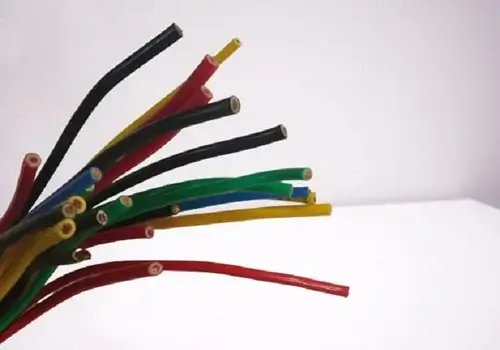Moisture-Sealed Pump Cabling and Safe Mains Leads: 2025 Sourcing Guide

Moisture, pressure, and thermal cycling are the enemies of long-life pump installations. Meanwhile, mains leads must balance certification, durability, and ergonomic design without compromising safety. In 2025, buyers who standardize specifications, verify compliance early, and run disciplined pilot tests will curb failures and shorten approvals.
Define performance before price
- Application context: borewell depth, hydrostatic pressure, water chemistry (salinity, minerals), and expected cable run length.
- Electrical needs: conductor size, voltage class, allowable voltage drop, and temperature rise.
- Mechanical realities: bend radius at pump head, abrasion risk along risers, and clamp/guide contact points.
- Environment: continuous immersion vs splash, UV exposure at wellhead, and rodent resistance where relevant.
Moisture barrier and construction essentials
- Jacket and insulation: PVC vs PE vs elastomer; LSZH/FRLS for buildings and potable-water-safe compounds where required.
- Water blocking: longitudinal fillers, jelly/gel filling, and tape barriers to stop capillary ingress.
- Armor choices: flat vs round armored for rocky bores; check torque behavior during installation.
- Markings: durable print, meter marking, and manufacturing date codes for traceability.
Compliance and certification that matter
- India-specific: BIS/ISI for relevant categories; IS 694/IS 7098 references where applicable.
- Global marks: UL/CSA or VDE where exports or multi-market products are planned.
- Material declarations: RoHS, REACH, and PFAS policies requested up front.
- Test records: hipot, insulation resistance, spark test, and long-soak immersion checks retained against lot numbers.
Vetting submersible pump cable suppliers
Prioritize factories with in-house compounding or tightly controlled resin sourcing, continuous immersion test rigs, and automated concentricity measurement. When shortlisting submersible cable manufacturers in india, ask for recent immersion aging data, tensile/elongation after water exposure, and jelly consistency reports across batches.
Safe mains leads: design and ergonomics
For appliances, tools, and IT gear, insist on connectors and plugs rated for the use case, robust strain relief, and cords that balance flexibility with kink resistance. Shortlist power cord manufacturers that maintain active safety marks, manage mold tool wear, and provide batch-level hipot and IR data with every shipment.
Factory capability and process control
- Equipment: automated cut/strip, crimp presses with calibrated applicators, precision extrusion lines, and online spark testers.
- Metrology: micrometers, concentricity gauges, pull-force rigs, and dielectric test gear with recent calibration.
- Process discipline: setup verification sheets, operator certifications, and controlled rework procedures.
- Traceability: serialized travelers tied to conductor, insulation, jelly, and armor lots; retain test logs for the product lifecycle.
Test before you commit volume
- Lab screening: continuity, hipot, insulation resistance, and accelerated aging (thermal cycling and immersion).
- Mechanical tests: pull-out at terminations, bend/torsion cycles at strain relief, abrasion on simulated riser edges.
- Field simulation: partial cable runs in water-filled test columns; monitor leakage current over time.
- Packaging trials: coil tightness, payout behavior, and label scanability after transport.
RFQ package that speeds approvals
- Drawings: conductor gauge, strand count, material specs, jacket wall thickness, and allowable tolerances.
- Acceptance criteria: minimum IR at temperature, hipot limits, pull-force by terminal type, and marking legibility.
- Compliance checklist: certificate numbers, scope pages, and surveillance audit dates.
- Samples: golden sample definition with photos and signed characteristics.
Commercials, logistics, and risk
- TCO view: unit price, copper clauses, resin volatility, test fixture costs, and expected scrap during installation.
- Lead-time tiers: pilot, steady-state, and surge capacities with real shift-by-shift throughput data.
- Dual-sourcing: validate alternates for critical conductors, plugs, and resins to blunt allocation shocks.
- Change control: PCN triggers for resin, plating, mold repairs, or sub-supplier switches with requalification steps.
Red flags to avoid
- “We pass everything” without raw data or lot-level reports.
- Out-of-date certifications or mismatched certificate scopes.
- Inconsistent jelly application or visible voids in cross-sections.
- Poor print durability and missing meter marks.
- Resistance to site audits or sample destructive testing.
2025 outlook and practical next steps
Expect steadier freight and better connector slotting, but lingering volatility in copper and specialty resins. The winning playbook is simple: lock specs early, demand transparent data packs, run a meaningful pilot that stresses installation realities, and keep an alternate on deck. For procurement teams formalizing supplier portals, use a single, unambiguous call-to-action like Visit Website to route vendors to controlled RFQ kits and NDAs.
A disciplined approach—tight specifications, credible compliance, and honest testing—will keep pumps running dry of failures and appliances safely powered through 2025.




